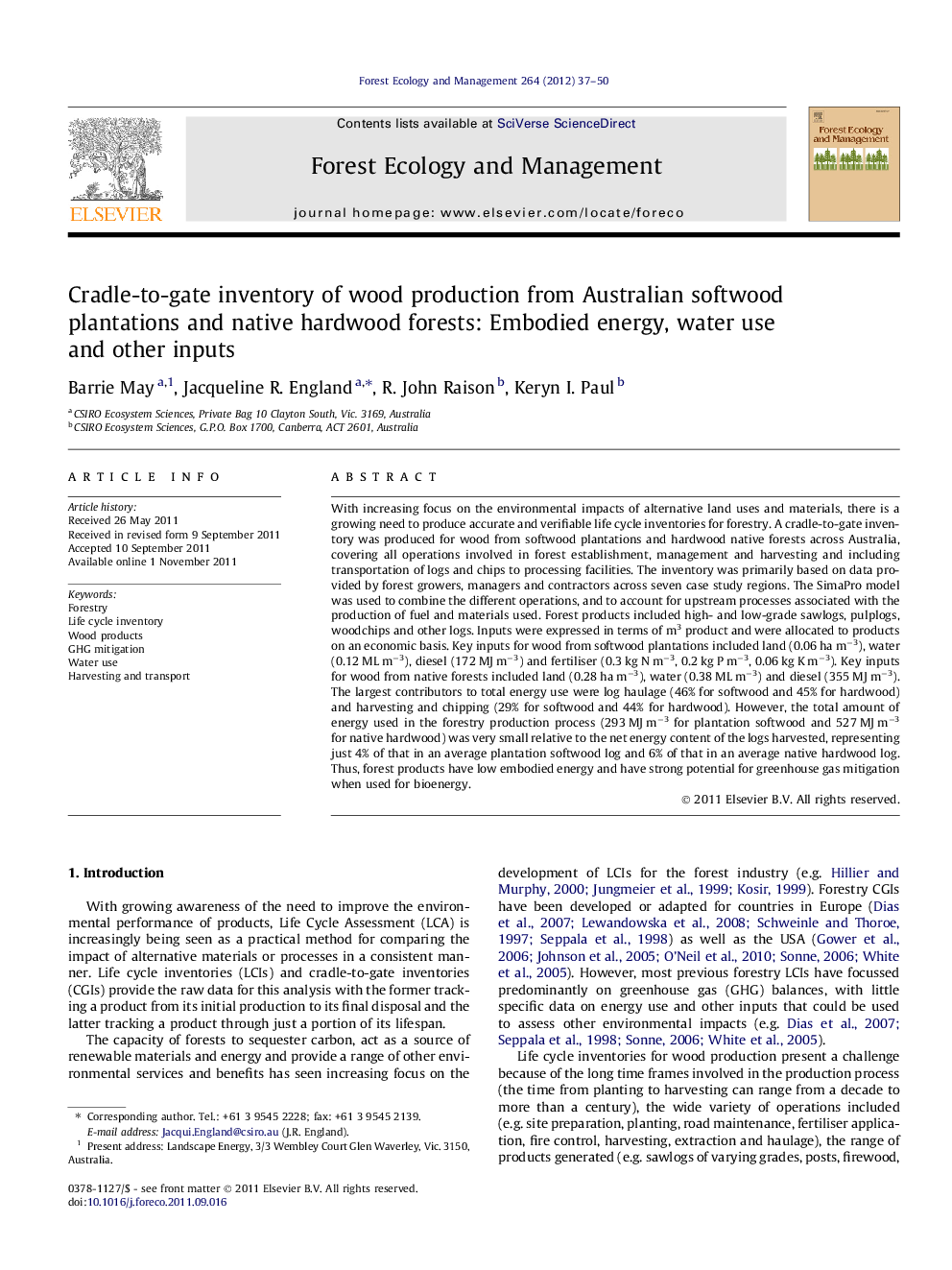| کد مقاله | کد نشریه | سال انتشار | مقاله انگلیسی | نسخه تمام متن |
|---|---|---|---|---|
| 87483 | 159253 | 2012 | 14 صفحه PDF | دانلود رایگان |

With increasing focus on the environmental impacts of alternative land uses and materials, there is a growing need to produce accurate and verifiable life cycle inventories for forestry. A cradle-to-gate inventory was produced for wood from softwood plantations and hardwood native forests across Australia, covering all operations involved in forest establishment, management and harvesting and including transportation of logs and chips to processing facilities. The inventory was primarily based on data provided by forest growers, managers and contractors across seven case study regions. The SimaPro model was used to combine the different operations, and to account for upstream processes associated with the production of fuel and materials used. Forest products included high- and low-grade sawlogs, pulplogs, woodchips and other logs. Inputs were expressed in terms of m3 product and were allocated to products on an economic basis. Key inputs for wood from softwood plantations included land (0.06 ha m−3), water (0.12 ML m−3), diesel (172 MJ m−3) and fertiliser (0.3 kg N m−3, 0.2 kg P m−3, 0.06 kg K m−3). Key inputs for wood from native forests included land (0.28 ha m−3), water (0.38 ML m−3) and diesel (355 MJ m−3). The largest contributors to total energy use were log haulage (46% for softwood and 45% for hardwood) and harvesting and chipping (29% for softwood and 44% for hardwood). However, the total amount of energy used in the forestry production process (293 MJ m−3 for plantation softwood and 527 MJ m−3 for native hardwood) was very small relative to the net energy content of the logs harvested, representing just 4% of that in an average plantation softwood log and 6% of that in an average native hardwood log. Thus, forest products have low embodied energy and have strong potential for greenhouse gas mitigation when used for bioenergy.
► We produce a lifecycle inventory for wood from softwood plantations and hardwood native forests.
► We cover all operations involved in forest establishment, management, harvesting and haulage.
► Total energy use in forestry was small relative to the net energy content of logs harvested.
► Forest products have low embodied energy and represent strong net carbon sequestration.
Journal: Forest Ecology and Management - Volume 264, 15 January 2012, Pages 37–50